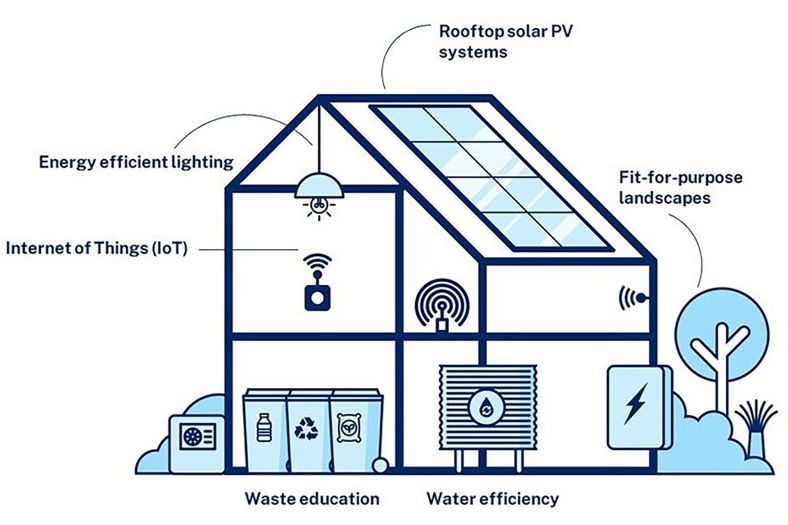Sustainable buildings
Industry-leading sustainability programs and practices driving operational efficiencies and reducing our environmental footprint.
Halving carbon emissions of government-owned properties
Our industry-leading programs and practices for building sustainability have almost halved the carbon emissions of our government-owned commercial properties over the past 5 years. We have calculated this by comparing our performance in 2022–23 with our baseline financial year of 2018–19.
Our ambitious plans to reduce carbon emissions rely on continuous investment in our buildings and the collective effort of our team of passionate experts. We also engage with our facilities management partner and government agency tenants to achieve our goals.
Sustainability programs
In 2021, we became the first government agency in Australia to achieve a 5-Star Green Star Performance rating across its owned commercial office portfolio of 22 buildings in metropolitan and regional NSW.
The same year we achieved carbon neutral building certification for whole building operations from Climate Active for 22 buildings across the owned office portfolio.
In 2024, we participated again in the National Australian Built Environment Rating System (NABERS)Sustainable Portfolios Index (SPI) for Offices. Property and Development NSW once again achieved excellent results for the portfolio of its 24 largest office buildings:
- NABERS Energy rating of 5.3 stars
- NABERS Water rating of 5.2 stars
- NABERS Indoor Environment rating of 4.2 stars
- NABERS Waste rating of 3.4 stars.
Sustainable building initiatives
We have introduced a number of initiatives to drive operational efficiencies to improve building sustainability, including:
- Rooftop solar PV systems: 60 office buildings with 2.66 MW total capacity.
- Solar batteries: installed battery energy storage systems at 15 sites, with installation at 5 more sites during 2024.
- Energy efficient lighting: 72 buildings with LED lighting and controls upgrades.
- Solar and battery monitoring: deployed new systems with advanced diagnostics, supporting optimal performance of renewable energy assets.
- Internet of Things (IoT): IoT smart building technology, enabling remote monitoring of real time indoor environment quality parameters such as indoor temperature, humidity, particulate matter, volatile organic compounds and light levels, to provide comfort conditions for all occupants.
- Water efficiency: amenities upgraded to low-flow and highly water efficient fittings and fixtures at 94 sites. Rainwater harvesting systems installed at 16 sites. Smart water monitoring at all major office buildings.
- Waste education: identifying opportunities to divert waste from landfill by educating tenants and promoting good waste practices.
- Circular economy: supported adoption of furniture re-purposing platform to re-home office furniture at end of lease, extending useful life and avoiding landfill.
- Fit-for-purpose landscapes: ecological reviews at 11 sites to design drought and fire tolerant gardens using native flora of indigenous cultural significance. Landscape design prepared for one site by Aboriginal-owned design studio.
- Electric vehicles: infrastructure readiness assessments for 25 buildings to support NSW Government electric vehicle rollout.
